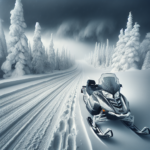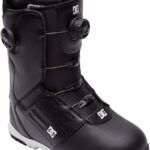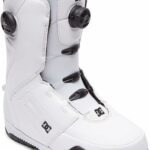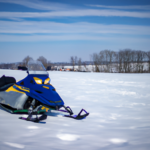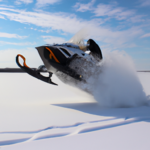The name of the article is “Is It Legal To Snowmobile On The Road?” It’s perfectly natural for you to assume that snowmobiling could be a unique alternative to driving, especially when the snow is falling and the roads are covered in white. However, is it actually legal, or are you inadvertently breaking the law? This article aims to provide a comprehensive look into the legalities around snowmobiling on roadways, giving you the insights you need to ensure you don’t find yourself on the wrong side of the law.
Understanding the Basics of Snowmobile Law
Navigating the laws around snowmobile use can be like navigating a fresh snowfall – a little tricky, but a whole lot easier once you understand how it works. In order to keep yourself safe and within the law, let’s unfog some of the basics.
Defining a snowmobile
Before you can understand the laws, you first need to know what actually constitutes a snowmobile. Essentially, a snowmobile is a motorized vehicle designed for travel on snow or ice. They are often used in environments where other vehicles cannot go, such as snowy mountainous terrain or frozen bodies of water.
In the legal world, there’s a good bit of language that specifically relates to snowmobiling. Terms like ‘right of way’, which refers to the legal entitlement to proceed first in certain road or traffic situations, or ‘registration’, which refers to the act of recording your vehicle’s details with the local authorities, will frequently appear in snowmobile law.
Basic Laws and regulations concerning the use of snowmobiles
Laws and regulations on snowmobile operation vary widely depending on location. Some states require operators to be licensed or certified, while others simply require the vehicle itself to be registered. Additionally, many places have restrictions on where and when a snowmobile can be operated – for example, some places prohibit driving on public roads, while others restrict use to certain times of day.
Legal Status of Snowmobiling on Roads
General legality
So, the burning question: is it legal to snowmobile on the road? In short, it depends on where you are. Some jurisdictions do allow snowmobiles on certain roads under certain conditions, while others prohibit it altogether.
Exceptions to the rule
Even in places where snowmobiling on roads is generally prohibited, there are often exceptions. In emergency situations, or in certain rural or remote areas where roads are not easily accessible by regular vehicles, snowmobiles may be permitted.
Penalties for illegitimate use
If you’re caught using a snowmobile on the road where it’s not allowed, penalties can range from fines, to confiscation of your snowmobile, to loss of snowmobiling privileges. It’s always best to err on the side of caution and ensure you know the law before you ride.
Factors That Can Affect the Legality
Local and state laws
Snowmobile laws are largely governed at the local and state level. This can mean what’s legal in your town might not fly in the next county over. Make sure you’re aware of the laws in any areas you’ll be traveling through or into.
Weather conditions
In some cases, the legality of road snowmobiling depends on the weather. If a heavy snowfall has made regular roads impassable for regular cars, snowmobiles might be allowed as an exception.
Time of the year
In some places, snowmobiling is only allowed during certain times of the year. This is often tied to hunting season or times when other recreational activities are less common.
Visibility
Another potential caveat pertains to visibility. In some cases, it may only be legal to operate a snowmobile on roads during daylight hours, or when visibility conditions are above a certain threshold.
Registration and Licensing Requirements for Snowmobiles
Process for registration
Registering your snowmobile often involves filling out paperwork and paying a fee to your local Department of Motor Vehicles or equivalent agency. You’ll need to provide details about the make, model, and year of your snowmobile, among other things.
Necessary legal documents
To register a snowmobile, you’ll typically need proof of ownership (like a bill of sale or title), proof of insurance, and possibly safety inspection documents. Check your local laws to be sure what’s required.
Regulations for minors operating a snowmobile
As for minors operating a snowmobile, laws vary by location. Some places require parental consent, others require safety education certificates, and some don’t allow minors to operate snowmobiles at all. If you’re a minor, or your child is interested in snowmobiling, it’s crucial to know what your legal responsibilities are.
Proper Snowmobile Safety on Roads
Safety gear and requirements
When operating a snowmobile, safety should be your top priority. This often means wearing a helmet and other protective gear, like goggles, gloves, and sturdy footwear. Additionally, your snowmobile should be equipped with a functioning headlight, taillight, and reflectors for visibility.
Safe driving techniques
Safe driving techniques can help prevent accidents and run-ins with the law. Always obey posted speed limits, stay to the right side of the trail, yield to uphill traffic, and slow down when visibility is poor.
Checking for hazards on the road
Wherever you’re snowmobiling, always be on the lookout for hazards – whether that’s hidden rocks, fallen tree branches, wildlife on the trail or other vehicles.
Impacts of Snowmobiling on Traffic and Pedestrians
Potential risks for other drivers
When snowmobiles share the road with other vehicles, it can create several risks. Snowmobiles are harder to see, slower, and not equipped to stop quickly. These elements all increase the risk of vehicle-snowmobile collisions.
How snowmobiles can obstruct traffic
Snowmobiles can be a traffic obstacle in certain circumstances. For instance, when they’re forced to cross roads at places void of signage, or when their slower speeds impede the flow of faster vehicles.
Potential dangers for pedestrians
Pedestrians are also at risk. The quiet operation of snowmobiles can make it difficult for pedestrians to hear them coming, especially when combined with limited visibility in snowy conditions.
Roles and Responsibilities of Snowmobilers
Driver’s conduct expectations
As a snowmobile operator, you’re expected to act responsibly and respect all applicable laws and regulations. This means riding at a safe speed, not operating under the influence of drugs or alcohol, and showing courtesy to other trail and road users.
Responsibilities towards pedestrians and other vehicles
You have a duty of care toward all other road and trail users – whether they’re on foot, in a car, or on another snowmobile. Make sure you’re always aware of your surroundings and prepared to react safely to unexpected situations.
Maintaining the snowmobile
Regular maintenance of your snowmobile is also part of your responsibilities. Keeping your ride in top shape will not only ensure it performs optimally and safely but can also help avoid any unwanted attention from law enforcement.
Understanding Snowmobile Trail and Road Crossing
Legality of crossing roads via snowmobile
When it comes to crossing roads with a snowmobile, the laws can vary greatly. In some locations, it’s perfectly legal provided you come to a complete stop, check both ways, and cross at a 90-degree angle. In others, it’s strictly prohibited.
Safety measures to take when crossing roads
No matter where you are, safety should always be your primary concern. Wait for an adequate gap in traffic, signal your intentions, and cross as quickly and directly as possible.
Who has the right of way
Typically, as a snowmobiler crossing a public road, you’re required to yield the right of way to all oncoming traffic. However, local laws and ordinances can modify this general rule, so always double-check.
How to Ensure Legitimate Use of Snowmobiles on Roads
Keeping up to date with laws
Laws can change, and ignorance is no excuse. Stay informed about current rules and changes in your area by checking with your local Department of Motor Vehicles or snowmobile club.
Properly insuring your snowmobile
Ensuring you’ve got appropriate snowmobile insurance not only covers you in the event of a mishap but also keeps you on the right side of the law in areas where it’s a requirement.
Practicing safe and responsible riding
At the end of the day, the key to legitimate snowmobile use is safe and responsible riding. Taking this approach will keep you, your passengers, and those around you safe, and help to preserve the goodwill of the public and authorities towards snowmobiling.
Consequences of Illegitimately Using Snowmobiles on Roads
Legal penalties and fines
Breaking the law while snowmobiling can result in penalties ranging from fines to court appearances to even losing the privilege to operate a snowmobile. Always know and obey the laws to avoid these consequences.
Impact on insurance coverage
If you illegally operate your snowmobile and get into an accident, it’s likely your insurance company won’t cover the damages, leaving you with hefty out-of-pocket costs.
Potential for accidents and injuries
Lastly, and most importantly, riding your snowmobile unlawfully greatly increases the chances of accidents and injuries. Sticking to the laws helps to ensure not just your own safety, but that of everyone on or around the roads.
- What Snowboard Bindings Should I Get? - January 23, 2024
- What Size Screws For Snowboard Bindings? - January 23, 2024
- How To Snowmobile On Water? - January 23, 2024

